45 explosive symbols are used to label materials that release
Explosive symbols are used with those materials that release - Weegy 0 Answers/Comments This answer has been confirmed as correct and helpful. f Get an answer Search for an answer or ask Weegy. Explosive symbols are used with those materials that release New answers There are no new answers. There are no comments. Questions asked by the same visitor Science Laboratory Safety Symbols and Hazard Signs, Meanings Web06.09.2017 · Other Symbols 39. Dangerous to the Environment. This symbol indicates that the substance in question can cause damage to the environment, and is most often used to label chemicals that are toxic to aquatic wildlife. Environmental hazards are classified as either acute or chronic. Lab workers should dispose of environmentally hazardous …
Hazard Class 1 Explosive Labels PAPER -- Explosive labels have a very agressive adhesive. They have strong adhesion to painted, steel, fiber, plastic and corrugated surfaces. They are printed on heavy-weight gloss paper. Outdoor life can be limited because they are printed on paper. Explosive Class 1 Labels are available in the following styles:
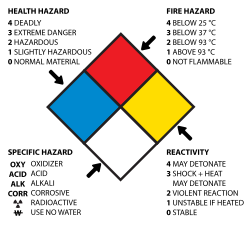
Explosive symbols are used to label materials that release
Identification, Classification and Labelling of Chemicals ... As a general rule a maximum of two danger symbols are used. The explanation of the letter symbols appearing in the attached lists are given below. Each letter symbol refers to a danger symbol or pictogram in Annex 1: Each danger symbol must cover at least 1/10 of the surface area of the label. 49 CFR - Hazardous Materials Transportation Regulations from … WebIf you handle hazardous materials or hazardous waste, or if you are a shipper, carrier, or freight forwarder, the 49 CFR Code of Federal Regulations, is a must. 49CFR is the regulation set you need. Get the book from Labelmaster. Questions? Call us 800-621-5808 Customer Service Login. Account. Login Wish list. Search. 0 product(s) Adding product... Products. … Safety Data Sheets Under Globally Harmonized System (GHS) WebGHS label elements, including precautionary statements. (Hazard symbols may be provided as a graphical reproduction of the symbols in black and white or the name of the symbol, e.g., flame, skull and crossbones.) Other hazards which do not result in classification (e.g., dust explosion hazard) or are not covered by the GHS; 3.
Explosive symbols are used to label materials that release. Health hazards Flashcards | Quizlet Explosive symbols are used to label materials that release great amounts of energy in all of the following EXCEPT: Sound Training for employees exposed to hazardous chemicals must include all of the following EXCEPT: How to dispose of the chemicals after use Health hazards can affect a body through all of the following routes of entry EXCEPT: The Young Workers Zone : Teaching Tools : Chemical Hazards: Symbols Corrosion. Skull and crossbones. Health hazards. Exclamation Mark. Environment. Biohazardous infectious materials. Consumer Products. WHMIS (Workplace Hazardous Materials Information System) helps identify the hazards of products like chemical and infectious agents. WHMIS groups products with similar properties or hazards into classes. Dangerous goods - Wikipedia WebDangerous goods, abbreviated DG, are substances that when transported are a risk to health, safety, property or the environment.Certain dangerous goods that pose risks even when not being transported are known as hazardous materials (syllabically abbreviated as HAZMAT or hazmat).An example for dangerous goods is hazardous waste which is waste that has … PDF Chapter 15: EXPLOSIVES DEFINITIONS - International Labour Organization An explosive substanceis a solid or liquid substance (or mixture of substances) which is in itself capable by chemical reaction of producing gas at such a temperature and pressure and at such a speed as to cause damage to the surroundings. Pyrotechnic substances are included even when they do not evolve gases.
eCFR :: 49 CFR Part 173 -- Shippers - General Requirements for ... Web30.05.2021 · Except for transportation by air, packages of hazardous materials that are damaged, defective, or leaking; packages found to be not conforming to the requirements of this subchapter after having been placed in transportation; and, hazardous materials that have spilled or leaked may be placed in a large salvage packaging that is compatible with … Explosive Symbols Are Used To Label - Najeeb Shadid Explosive symbols are used to label materials that release great amounts of energy in all of the following forms except. Hazard symbols and hazard pictograms. Whether you need to print labels for closet and pantry organization or for shipping purposes, you can make and print custom labels of your very own. Explosives Signs, Explosion Hazard Signs - Safety Sign Explosives signs serve as a constant warning to workers entering the area that serious hazards exist and that safety is essential. Manufactured for Durability Explosives Signs are specifically manufactured from the highest-quality materials such as plastic and aluminum to ensure your new sign lasts for years. Gas Identification Signs Shipped Fast 10 Explosive Chemicals Examples - Substances - Dangers Here are the explosive chemicals examples in daily life: 1. Amatol. Amatol is a chemical that is classified as a powerful explosive (High Explosive) that has fuction as a destroyer so it can be used for military purposes, mining purposes and so on. Amatol is formed from a mixture of TNT and Ammonium Nitrate.
10 Explosive Substances In Everyday Items - Listverse Picric acid is used in the synthesis of dyes, to manufacture matches and explosives, to make colored glass, to etch copper, and as a drug. The main reason for the decline of picric acid usage has been its toxic nature. Picric acid was involved in the largest man-made explosion before Hiroshima. California Code of Regulations, Title 8, Section 5194. Hazard ... Sep 28, 2018 · (B) Any food, food additive, color additive, drug, cosmetic, or medical or veterinary device, including materials intended for use as ingredients in such products (e.g., flavors and fragrances), as such terms are defined in the Federal Food, Drug, and Cosmetic Act (21 U.S.C. 301 et seq.) and regulations issued under that Act, when they are subject to the labeling requirements of that Act and ... 15 Hazard Symbols: What Do They Mean - Pittsburgh Healthcare Report Compressed gas can be commonly seen in most labs, such as CO 2 cylinder containers or non-insulated tanks. Seeing this symbol means that the content can be toxic, oxidizing, flammable, and corrosive. This is the reason why stocks of compressed gas cylinders are usually stored separately from the main lab and are treated with caution. GHS Labeling Requirements: The Definitive Guide [2021 Update ... - Luminer It is an internationally-recognized standard for labeling containers that hold hazardous materials. Currently, more than 65 nations have adopted some version of these standards. Although the original framework was published in 1992, the process of countries actually applying the standards has proven to be a long one. What Does the GHS Do?
Hazard Symbols And Their Meanings - Ultima Environmental The COSHH hazard sign is the picogram of an exploding bomb. Flammable Chemicals or substances that may catch fire in contact with air, have a low flash point, produce flammable gases if they come into contact with water, or would set alight following brief contact with an ignition source.
- Division of Research Safety | Illinois Materials other than pyrophoric materials that can react with air and without energy added. These will only ignite in large quantities or after long periods of time. Substances and Mixtures which, in contact with water, emit flammable gases. Category 1, 2, 3. Substances that emit flammable gases when in contact with water. Explosive. Explosives
Know Your Hazard Symbols (Pictograms) - Princeton University Hazard symbols have come a long way from the rudimentary drawings used to designate poison in the early 1800s. As a result of updated OSHA chemical labeling requirements, 2016 marks the first full year of adoption of the Globally Harmonized System of Classification and Labeling of Chemicals (GHS) in the U.S.
PDF Hazard Communication Standard Pictogram - Occupational Safety and ... pictograms on labels to alert users of the chemical . hazards to which they may be exposed. Each pictogram consists of a symbol on a white background framed within a red border and represents a distinct hazard(s). The pictogram on the label is determined by the chemical hazard classification. HCS Pictograms and Hazards. Health Hazard • Carcinogen
In osha Explosive symbols are used to label materials that release ... In osha Explosive symbols are used to label materials that release great amounts of energy and all of the following forms except? Wiki User ∙ 2017-06-15 02:32:29
Occupational Safety and Health Administration Web(f)(7) The employer may use signs, placards, process sheets, batch tickets, operating procedures, or other such written materials in lieu of affixing labels to individual stationary process containers, as long as the alternative method identifies the containers to which it is applicable and conveys the information required by paragraph (f)(6) of this section to be …
Explosive - Wikipedia An explosion is a type of spontaneous chemical reaction that, once initiated, is driven by both a large exothermic change (great release of heat) and a large positive entropy change (great quantities of gases are released) in going from reactants to products, thereby constituting a thermodynamically favorable process in addition to one that propagates very rapidly.
Chemical Hazard Symbols for Labels - Chemical Labels UK Chemical Label Hazard Symbols These warning symbols represent the physical, health and environmental risks presented by a chemical or chemical mixture. Explosive: May explode if subjected to heat, ignition source, friction or shock. Avoid ignition sources, keep your distance, ear protective clothing.
Hazardous Chemical Information Hazard Symbols. For recognition purposes, the hazard symbols in the catalog are from Title 49 of the Code of Federal Regulations (CFR), part 172 (DOT), yet the criteria used for assigning hazard symbols is primarily from the American National Standards Institute (ANSI) standard Z129.1 for Hazardous Industrial Chemicals Precautionary Labeling.
PDF DOT CHART 16 Hazardous Materials Markings,Labeling and Placarding Guide Hazardous Materials Warning Labels Actual label size: at least 100 mm (3.9 inches) on all sides CLASS 3 Flammable Liquid CLASS 4 Flammable Solid, Spontaneously Combustible, and Dangerous When Wet: Divisions 4.1, 4.2, 4.3 Cargo Aircraft Only §172.405(b), §172.415, §172.416, §172.417 CLASS 5 Oxidizer, Organic Peroxide: Divisions 5.1 and 5.2
1910.109 - Explosives and blasting agents. | Occupational Safety and ... Explosive - any chemical compound, mixture, or device, the primary or common purpose of which is to function by explosion, i.e., with substantially instantaneous release of gas and heat, unless such compound, mixture, or device is otherwise specifically classified by the U.S. Department of Transportation; see 49 CFR chapter I.
The Nine DOT Hazard Classes Explained: Explosives, Gases, & More Exit signs, smoke detectors, and x-ray equipment are a few common sources of radioactive material in our day-to-day lives. Hazard Class 8 - Corrosive Materials Acids (low pH) and bases (high pH) are corrosive materials that can eat away at skin and steel. Sources for corrosive material include battery acid and degreasers.
What Do the Different Hazardous Signs Mean? - Hazmat School Explosives: Signs for explosives are orange diamond-shaped signs with a number 1. Depending on the particular type of explosive, the sign gets more specific with another number after the one, indicating the class division. For example, a blasting agent is a 1.5. Some signs include an explosion hazmat symbol that resembles the bomb on the GHS sign.
OSHA 10 Hour Flashcards | Quizlet A hazard warning label may contain words, pictures, symbols, or any combination thereof which convey the specific physical and health hazard (s), including target organ effects of the chemical (s) in the container (s). Personal protective equipment includes all these devices or clothing EXCEPT: Container labels
49 CFR § 172.101 - Purpose and use of hazardous materials table. Web(h) Column 7: Special provisions. Column 7 specifies codes for special provisions applicable to hazardous materials. When Column 7 refers to a special provision for a hazardous material, the meaning and requirements of that special provision are as set forth in § 172.102 of this subpart. (i) Column 8: Packaging authorizations. Columns 8A, 8B and 8C …
GHS Hazard Sign, Symbol & Pictogram Meanings - OSHA.com The flammable GHS pictogram is used on chemicals that emit flammable gas or could self-ignite when exposed to water or air. Chemical classes include: Flammable gases, liquids, and solids Pyrophoric materials Self-reactive materials that aren't also explosive Organic peroxides that aren't also explosive Water-reactives
Dangerous goods classes and hazard labels - Civil Aviation Safety Authority This label is used on liquefied gases, such as the ones in Class 2. This way up. This label ensures a load is placed the correct way up and can be used for non-dangerous goods. Magnetised material. This label ensures that the load is kept away from the aircraft compass detector unit while being loaded and unloaded.
PDF Pictograms are symbols used to warn you about chemical hazards. - VUMC Symbol Pictogram Name Hazards General Meaning Flame Flammable Pyrophoric Self-heating Emits Flammable Gas burn. Self-reactive Organic peroxides These chemicals burn or can release gases that Flame over Circle Oxidizers These chemicals give off oxygen and can make a fire spread. Exploding Bomb Explosive
Safety Data Sheets Under Globally Harmonized System (GHS) WebGHS label elements, including precautionary statements. (Hazard symbols may be provided as a graphical reproduction of the symbols in black and white or the name of the symbol, e.g., flame, skull and crossbones.) Other hazards which do not result in classification (e.g., dust explosion hazard) or are not covered by the GHS; 3.
49 CFR - Hazardous Materials Transportation Regulations from … WebIf you handle hazardous materials or hazardous waste, or if you are a shipper, carrier, or freight forwarder, the 49 CFR Code of Federal Regulations, is a must. 49CFR is the regulation set you need. Get the book from Labelmaster. Questions? Call us 800-621-5808 Customer Service Login. Account. Login Wish list. Search. 0 product(s) Adding product... Products. …
Identification, Classification and Labelling of Chemicals ... As a general rule a maximum of two danger symbols are used. The explanation of the letter symbols appearing in the attached lists are given below. Each letter symbol refers to a danger symbol or pictogram in Annex 1: Each danger symbol must cover at least 1/10 of the surface area of the label.

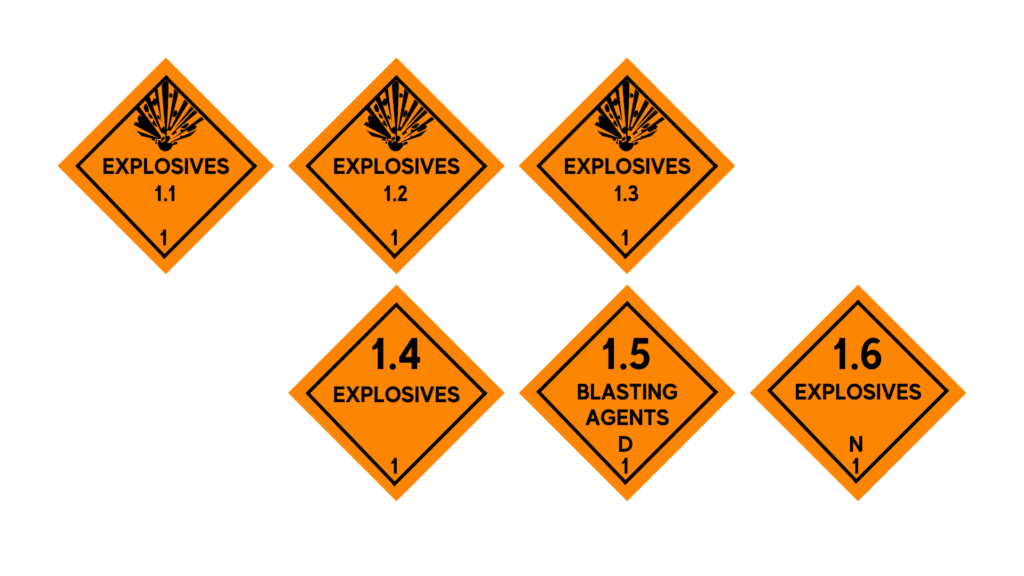
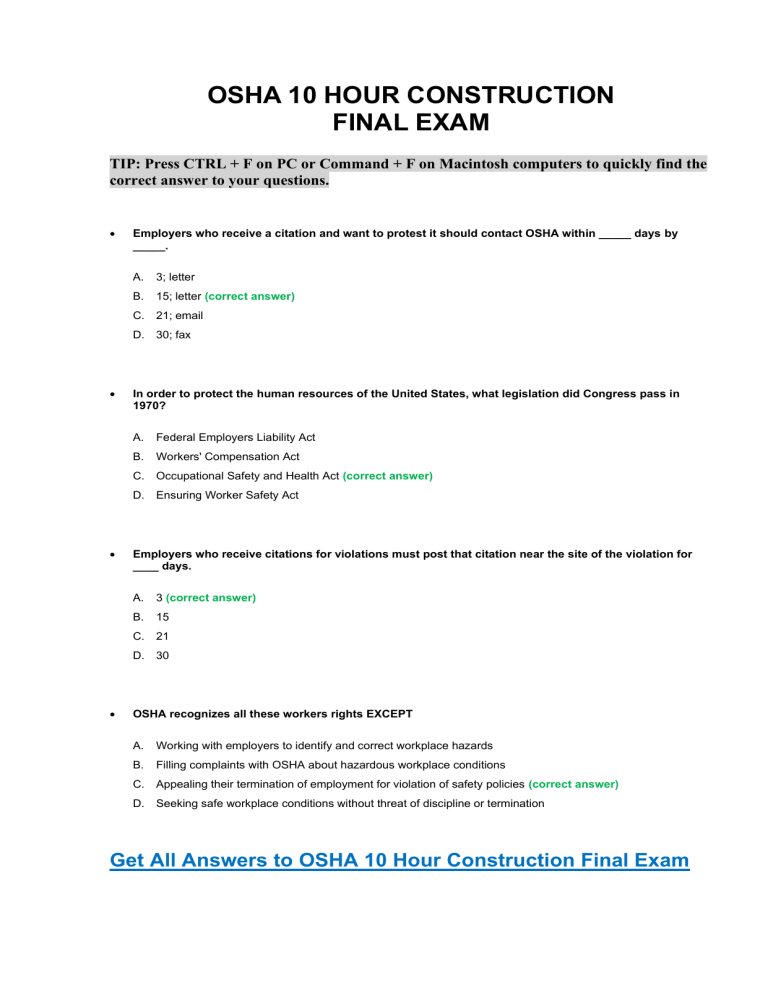
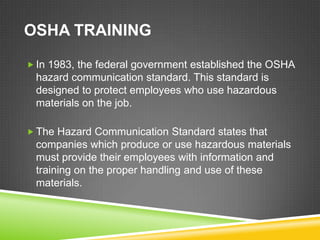
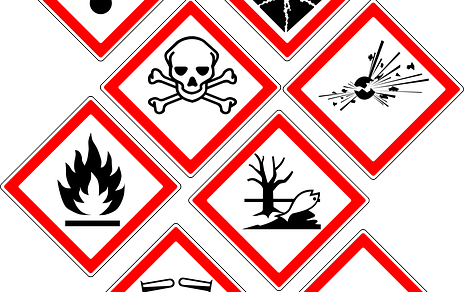
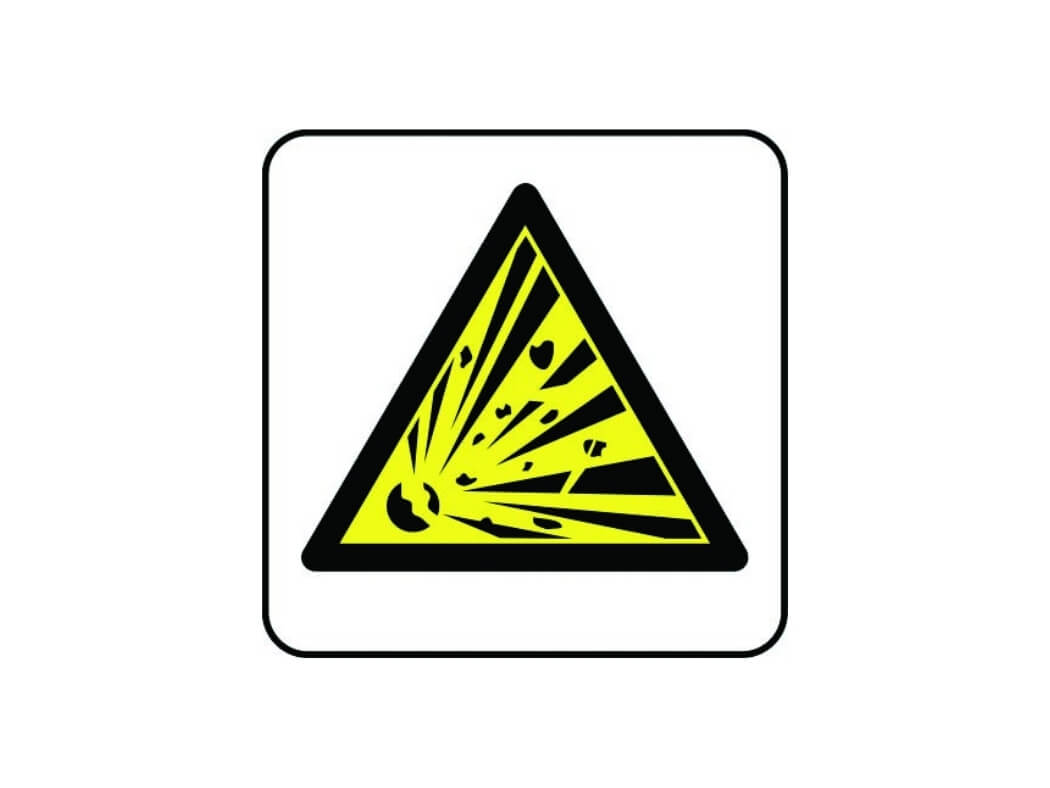

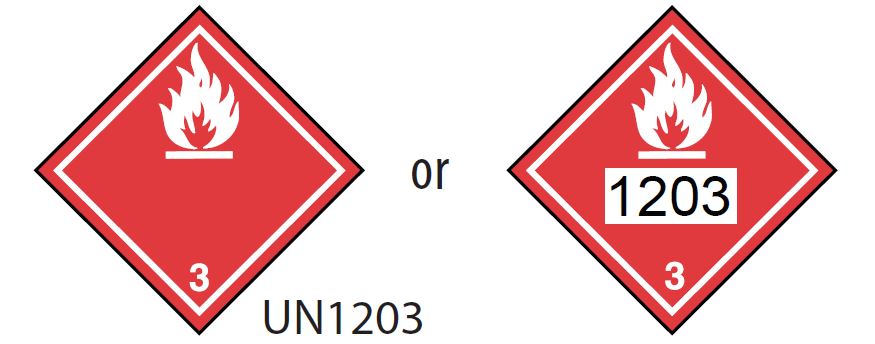
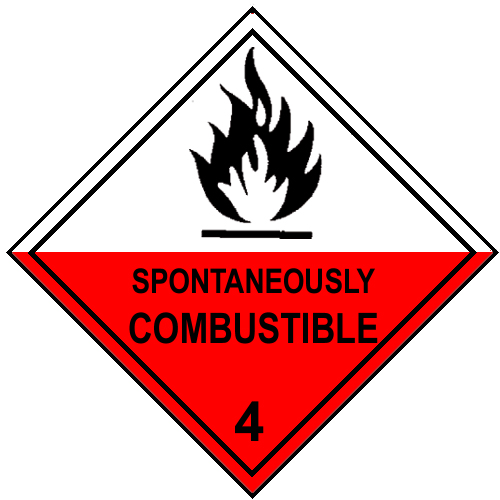

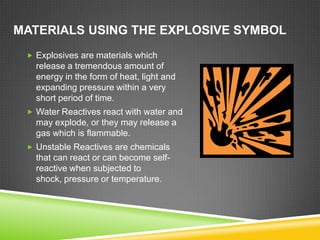

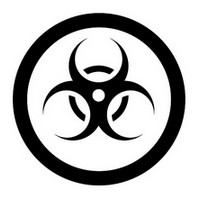



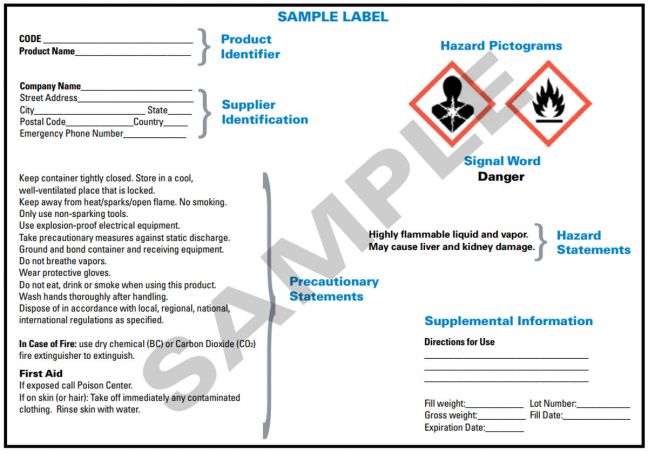

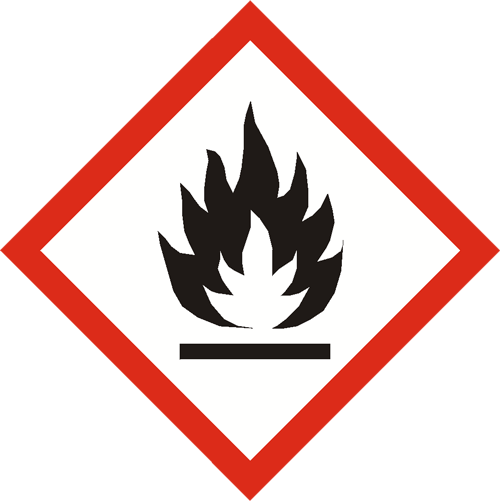





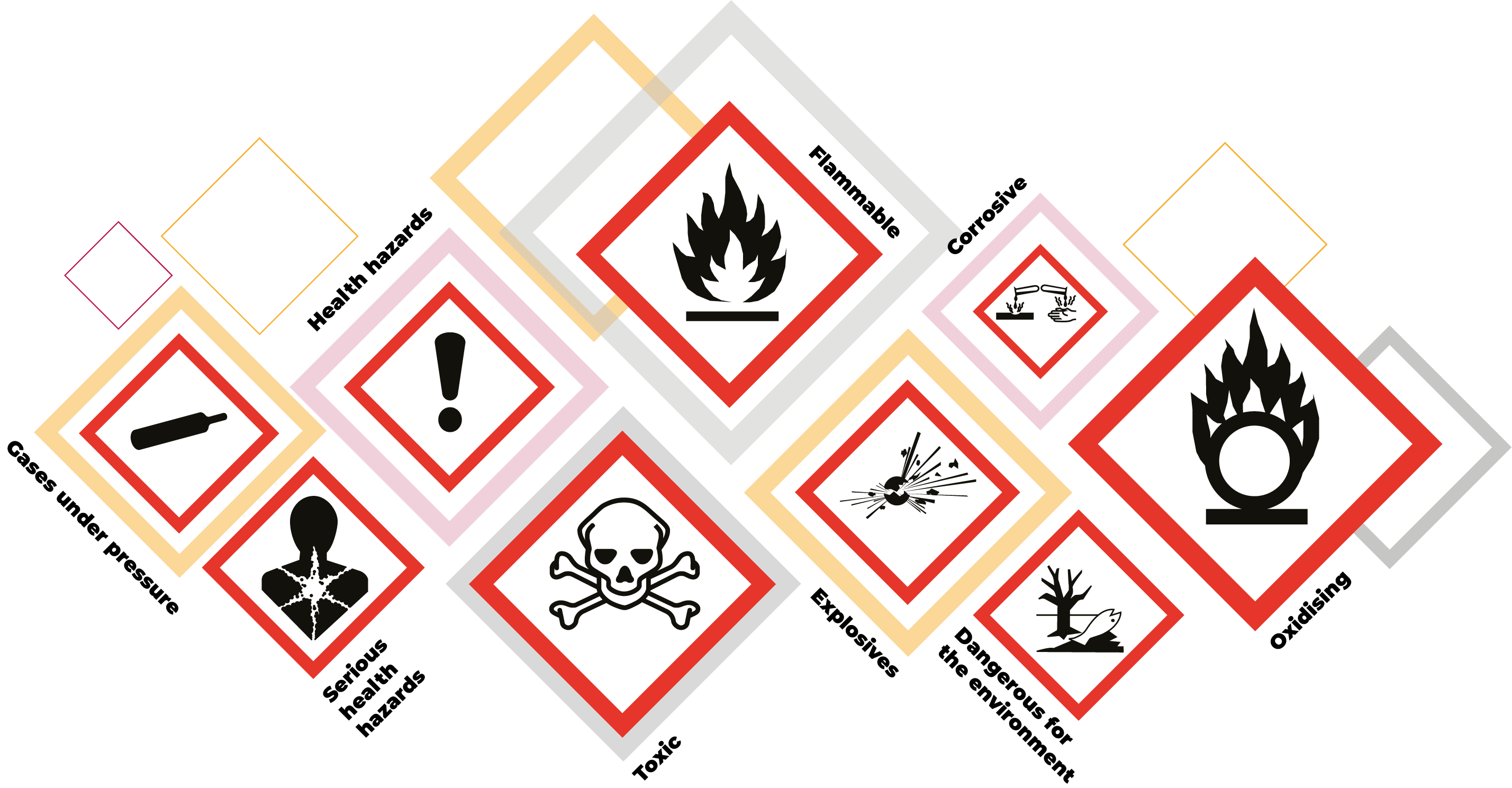






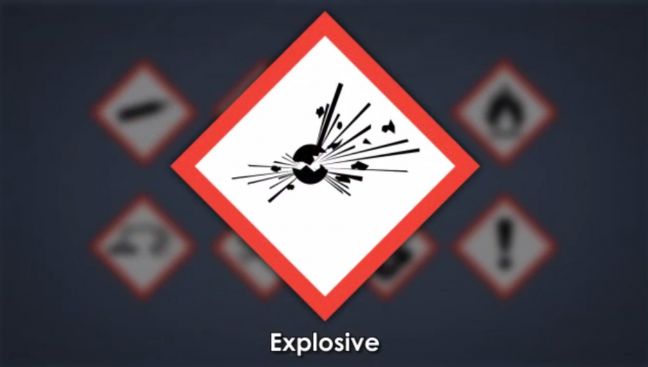
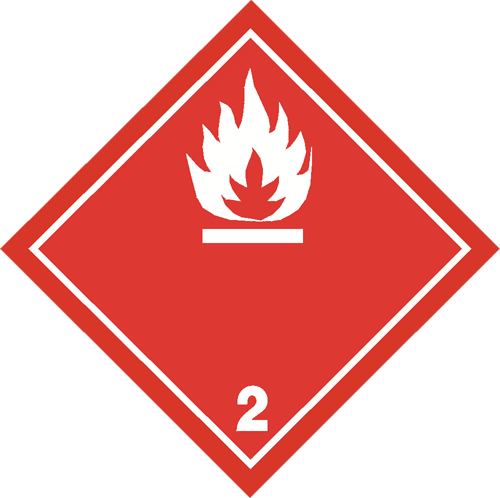



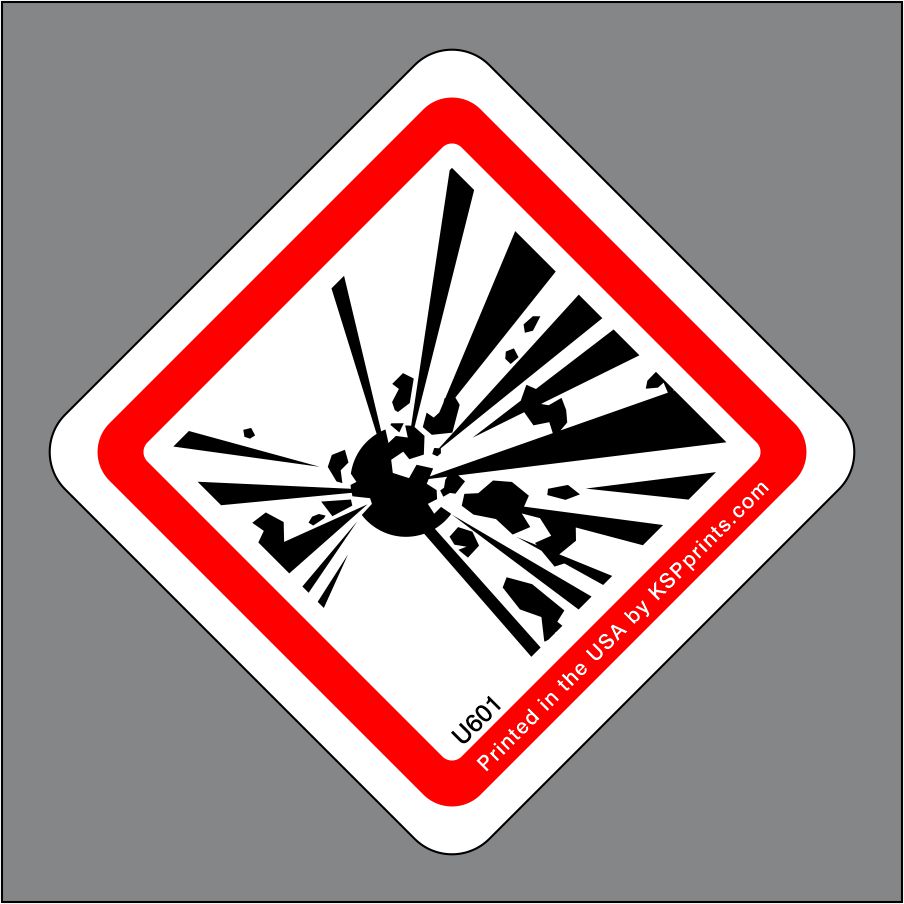
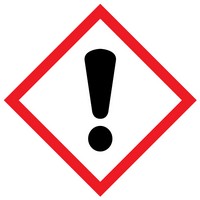
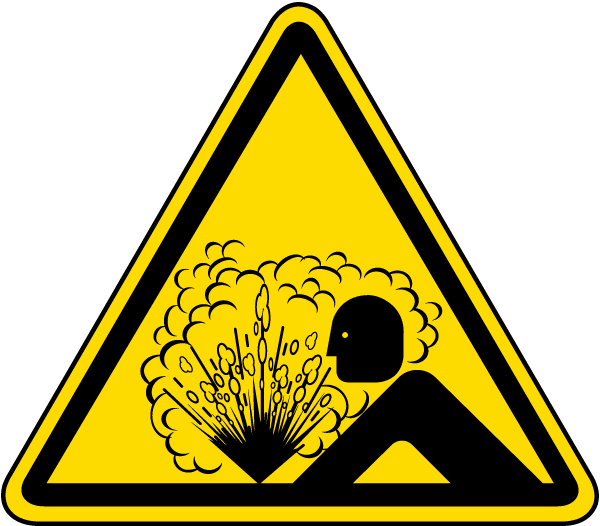


Post a Comment for "45 explosive symbols are used to label materials that release"